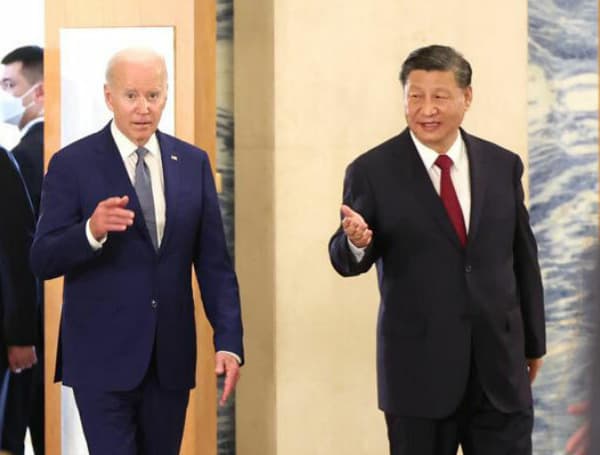A powerful U.S.-made missile defense system cleared a review that stalled its deployment in South Korea, opening a path to full emplacement in Seoul’s arsenal and strengthening U.S. military ties with a key ally, The Wall Street Journal reported.
The Terminal High-Altitude Area Defense (THAAD) battery arrived in South Korea during the Trump administration and amid skyrocketing tensions between the West and North Korea, according to the WSJ. Local residents near the former golf course where it was initially stationed protested, triggering the newly-inaugurated administration, which took a nonconfrontational posture toward hostile neighbors Russia, China, and North Korea, to initiate an environmental review that blocked its full assembly for nearly six years.
The review concluded that the electromagnetic waves emitted by the THAAD system posed little danger to civilians, Seoul’s environment and defense ministries said Thursday, according to the WSJ.
In the news: Russia ‘Confident’ In Ties With China Following Xi-Blinken Visit
The system is expected to become fully operational on South Korean soil in 2024.
China, Russia, and South Korea had opposed the THAAD deployment, calling it a security provocation, according to the WSJ.
South Korea’s conservative former administration approved the THAAD deployment amid a flurry of North Korean missile tests, the WSJ reported. The system is capable of intercepting short and medium-range missiles, including once they begin a downward trajectory, and has a much larger radar detection range than any missile defense system South Korea previously fielded.
But shortly after left-leaning President Moon Jae-in took office in 2017, he expressed skepticism about deploying the system. China was believed to have retaliated against Seoul for the decision, leading to a drop in revenue from Beijing-driven trade and tourism, according to the WSJ. Moon achieved congenial relations with China, in part on the condition he would not pursue any further THAAD deployments.
U.S. Forces Korea declined to comment to the WSJ.
In the news: While Biden Promotes Ukraine And Activism Overseas, China Moves To America’s Doorstep
Moon’s successor, Yoon Suk-Yeoul has strengthened ties with the U.S. and taken a harder line on China, even risking China’s ire by opposing any unilateral changes to the status quo in Taiwan, according to the WSJ. Reuters previously reported the U.S. and South Korea are discussing ways to cooperate on U.S. nuclear operations, a way of reinforcing“extended deterrence” as North Korea escalates military buildup and threatens Seoul’s sovereignty.
Deploying the THAAD system represents a “matter of security sovereignty that can never be subject to negotiation,” a South Korean official said in August after China attempted to persuade Seoul to honor the Moon administration’s promises, according to the WSJ.
China will likely retaliate again against South Korea but will have to take calculated action or risk driving Seoul closer to Washington, Sukhee Han, president of South Korea’s Institute for National Security Strategy, told the WSJ.
“When you’re too important to be ignored, it’s best to align and strengthen your defenses so you don’t end up as a battlefield,” Elbridge Colby, principal of The Marathon Initiative and former U.S. deputy assistant secretary of defense, tweeted on Tuesday. That’s “why a policy of trying to stay out of it is unwise for countries like South Korea.”
Android Users, Click To Download The Free Press App And Never Miss A Story. Follow Us On Facebook and Twitter. Signup for our free newsletter.
We can’t do this without your help; visit our GiveSendGo page and donate any dollar amount; every penny helps.

